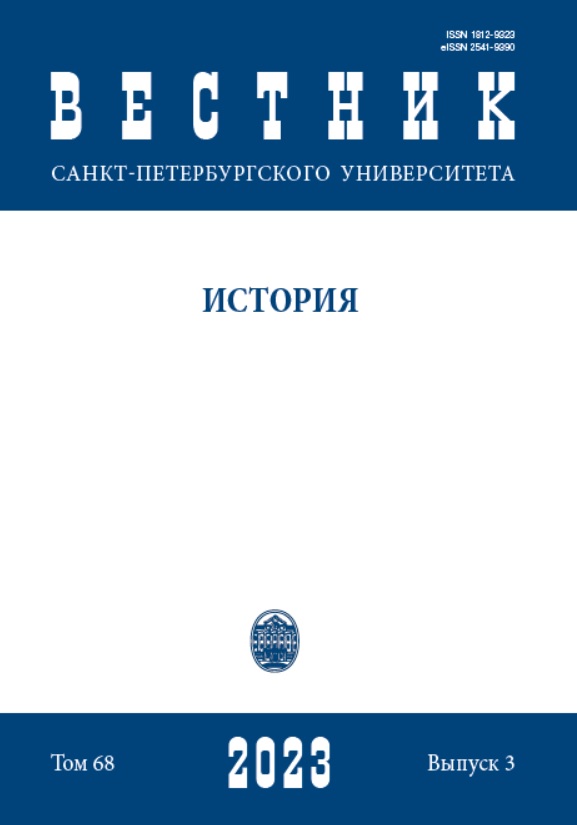Shīrvānian Beylerbey Khosrow Khān and the Russian-Persian Conflict in the Middle of the 17th Century
DOI:
https://doi.org/10.21638/spbu02.2023.311Аннотация
В середине XVII века относительно стабильные торговые и дипломатические отношения между Россией и сефевидской Персией были нарушены конфликтом, продолжавшимся с 1651 по 1653 г. Основная цель исследования — изучить непосредственные и косвенные причины конфликта, в частности, место ширванского бейлербея Хосровхана в этом конфликте, который по мнению ряда историков, сыграл важную роль в этой войне. Хосров-хан, будучи бейлербеем сефевидской пограничной провинции в районе Южного Кавказа, непосредственно участвовал в официальных русско-сефевидских торговых отношениях. Ханские купцы регулярно приезжали в Россию и торговали на местных рынках. Однако частые нападения казаков на ширванских и персидских купцов приносили им убытки. Хосров-хан отправил несколько грамот астраханским и терским князьям, жалуясь на эти грабительские набеги казаков. Кроме того, Хосров-хан выразил недовольство строительством крепости на территории в устье рек Терек и Сунжа, которую Россия и Персия считали сферой своего политического влияния. Все эти факторы постепенно спровоцировали Хосров-хана и других местных дагестанских и кумыкских правителей (по всей видимости, с согласия сефевидского шаха) организовать военные атаки на крепость. Этот, казалось бы, локальный конфликт стал сразу предметом официального русско-персидского государственно-дипломатического диалога. Исследование проведено на основе ряда архивных и опубликованных российских и персидских источников.
Ключевые слова:
русско-сефевидские отношения, Ширван, Кавказ, торговля, война, дипломатия, XVII век
Скачивания
Библиографические ссылки
Загрузки
Опубликован
Как цитировать
Выпуск
Раздел
Лицензия
Статьи журнала «Вестник Санкт-Петербургского университета. История» находятся в открытом доступе и распространяются в соответствии с условиями Лицензионного Договора с Санкт-Петербургским государственным университетом, который бесплатно предоставляет авторам неограниченное распространение и самостоятельное архивирование.





